Say hello to our new favorite turkey brine recipe! Try our turkey brine for turkey with amazing flavor, soft and tender meat, and crispy skin. We highly recommend it to anyone preparing a turkey.
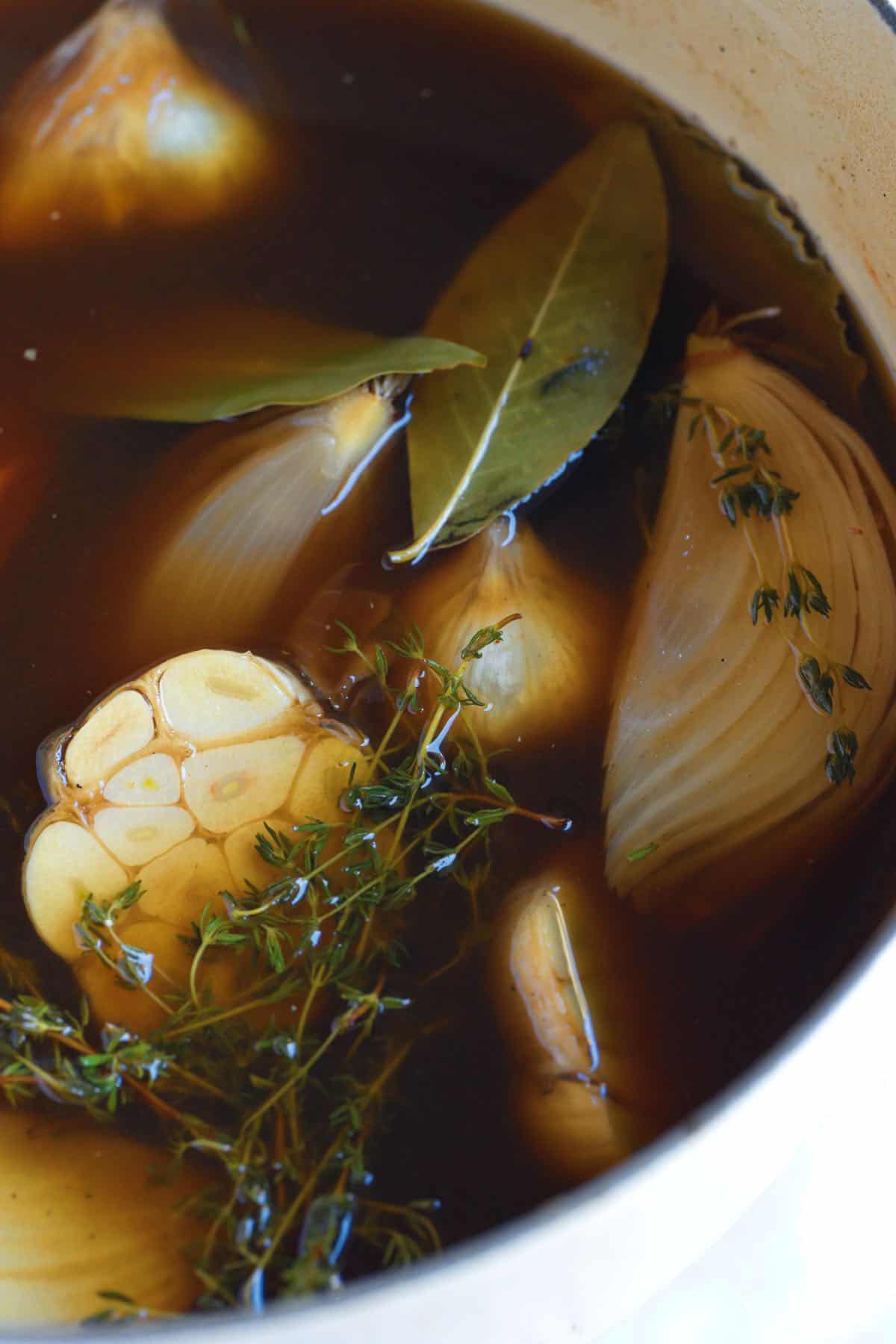
If you’re on the fence about brining your turkey, just do it! This turkey brine is a game-changer, adding incredible flavor and making your roasted turkey savory and delicious while tenderizing the meat (trust me on this one).
We teamed up with our friend, Chef Richard Hattaway, to develop this turkey brine recipe, and we couldn’t be more thrilled with the results. I was determined to make sure that brining was truly worth the effort, and I am 100% confident that this brine delivers. It makes the best roasted turkey I’ve ever had, and you can bet I’ll be using it for every Thanksgiving turkey moving forward.
Key Ingredients
- Salt: I use kosher or good-quality sea salt for my turkey brine. Avoid using iodized salt, as it can give the turkey a metallic taste. When measuring salt for your brine, use a scale or our specific volume measurements in the recipe below (we have provided them for Morton’s and Diamond Crystal). Look at my photo below. Both bowls are holding 4.5 ounces of salt. The Diamond Crystal salt flakes are fluffier and bigger, taking up more space than Morton’s salt. You don’t need to worry about this if weighing your salt, but if you use volume measurements (cups/tablespoons), you must know about it.
- Sugar: If I’m going to brine a turkey, I want it to be flavorful. The brown sugar added to our brine recipe helps tremendously with this. The combination of salt and sugar in our brine recipe pulls some liquid from the turkey meat and replaces it with the brine, adding so much flavor.
- Worcestershire Sauce: This adds a lovely savory, umami flavor to our brine (and ultimately the turkey meat).
- Pepper: Richard adds a lot of black pepper to his brine, and I love it. Black pepper does a fantastic job of convincing you something is well-seasoned (that’s why so many chefs always season with salt AND pepper when cooking).
- Garlic: This brine avoids citrusy flavors and focuses on savory flavors instead. Whole heads of garlic, lots of fresh thyme, and bay leaves make your turkey taste amazing.
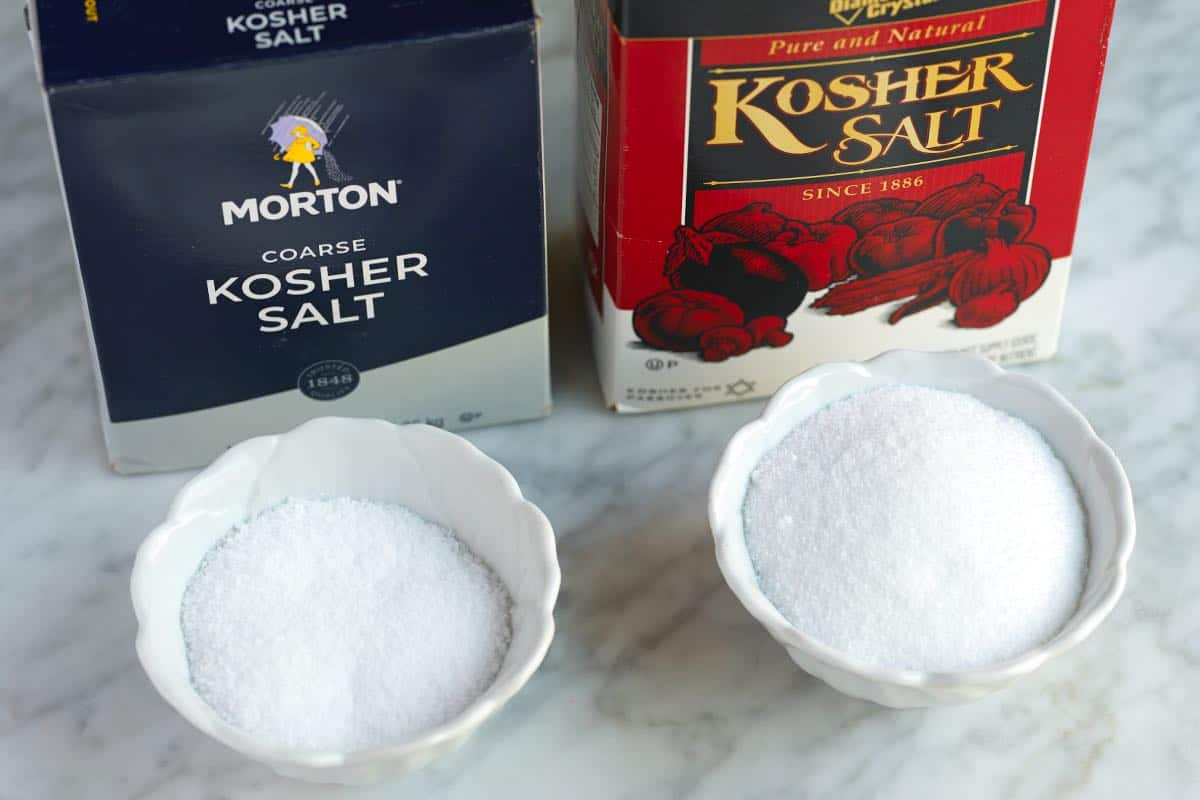
How to Brine a Turkey
I brine my turkey for 2 days. Turkeys are large, and the brine needs time to work through the bird. If you do not have 2 days, we still recommend leaving your turkey in the brine for at least 1 day (trust me, 1 day in this brine will produce a more flavorful turkey than not brining at all).
I use a large, heavy-duty brine bag sold in kitchen stores and online. You can also use a 5-gallon bucket with a food-safe liner. Don’t worry if the turkey is not entirely submerged (ours wasn’t in our video or photo below). If this happens to you, flip the turkey in the brine halfway through brining.
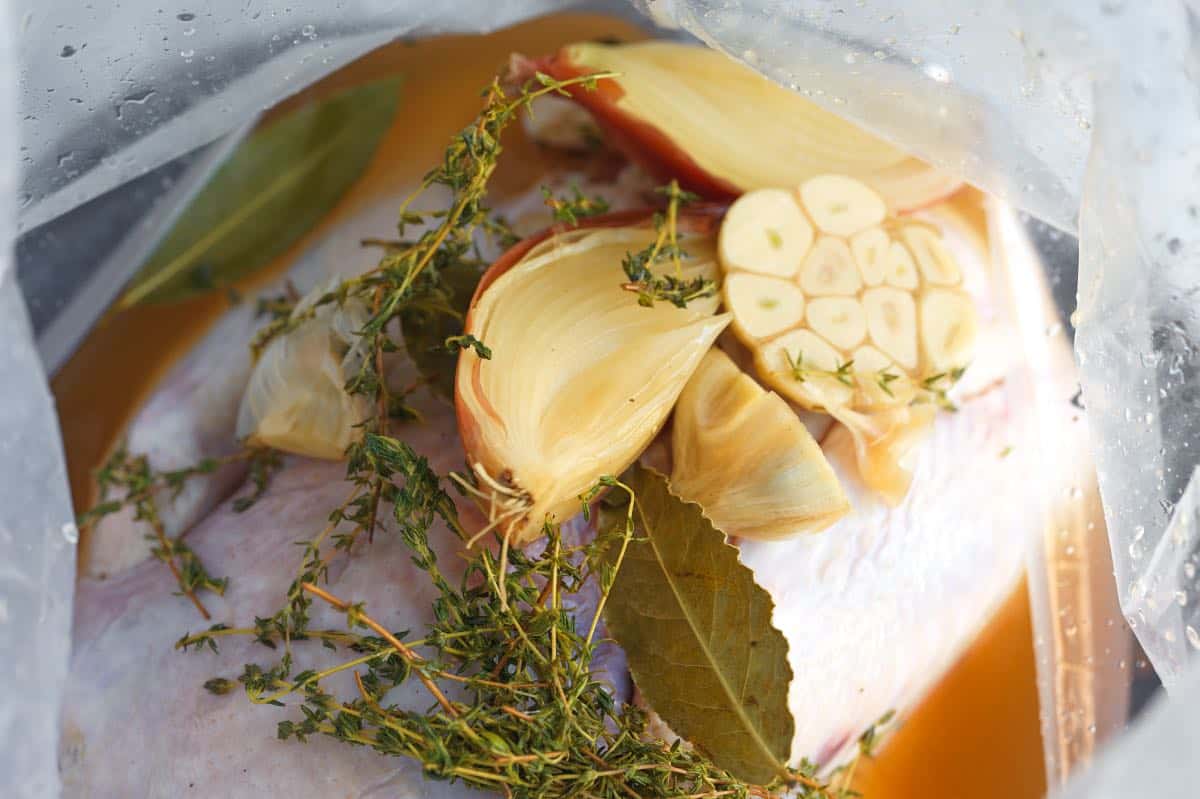
Store your turkey in the brine at or below 40°F (4°C). Here’s the USDA’s guide for safely brining a turkey.
If you have the space (or a second fridge), you can brine the turkey in your refrigerator. Place your bag or bucket into the fridge. I put my brine bag into a roasting pan.
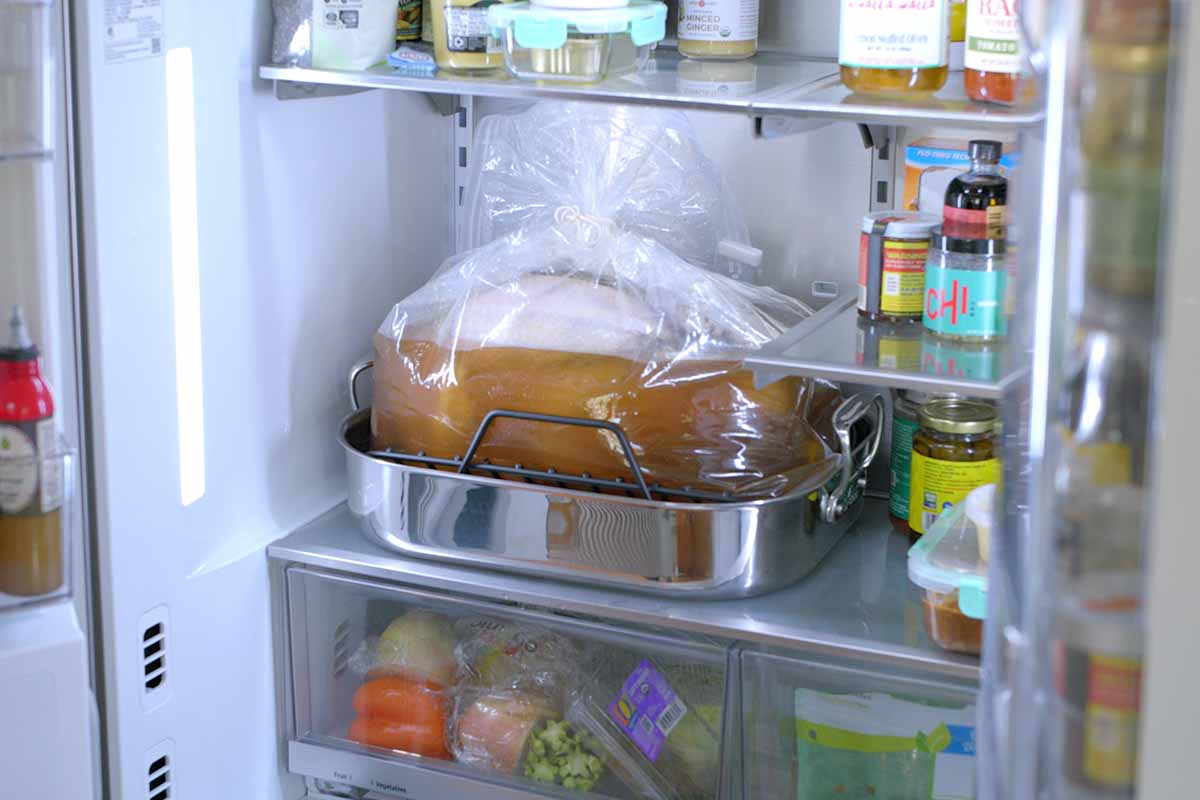
If you do not have enough space in your fridge, use a brine bag and place it in a well-insulated, ice-filled cooler. If you use a cooler, check the temperature of the ice water regularly to ensure that it stays below 40°F (4°C). While I use my roasting pan to hold my brine bag when using the fridge, the pan doesn’t fit inside my cooler, so I put the bag directly into the ice without a pan underneath. Brine bags are thick, so you should not have any issues with them leaking (just keep something sharp away from them).
I never rinse my turkey after brining it. You might see some recipes call for rinsing, but it’s not necessary with our turkey brine. We’ve done side-by-side taste tests with rinsed and unrinsed turkeys and found no difference in saltiness. I promise your turkey won’t be over-salted!
I’ve got one more tip for you! If you are like me and love crispy turkey skin, after removing it from the brine, let your turkey air-dry in the fridge overnight. I place it on a roasting rack inside a roasting pan or rimmed baking sheet. I love this step because my brine is out of the way, and my turkey is perfectly brined and ready to roast the next day.
Thanksgiving Turkey Timeline
If you are like us, you don’t roast many turkeys throughout the year. Most of us really only roast them around the holiday season.
Here’s our timeline for thawing, brining, and roasting turkey. I will use Thursday as our goal since that’s how Thanksgiving falls in the US, but you can easily move the days around to fit your intended roasting day.
This timeline assumes a thawed turkey. To safely thaw a turkey, do it in the refrigerator. Plan on 24 hours in the fridge for every four to five pounds of turkey–so a 16-pound turkey will take four days to thaw.
- Monday: Brine the turkey
- Wednesday night: Remove turkey from brine, place it onto a rack set inside a roasting pan or rimmed sheet pan, and refrigerate overnight
- Thursday: Roast the turkey, allowing approximately 14 minutes per pound, in an oven preheated to 325°F (162° C). Here’s our roasted turkey recipe.
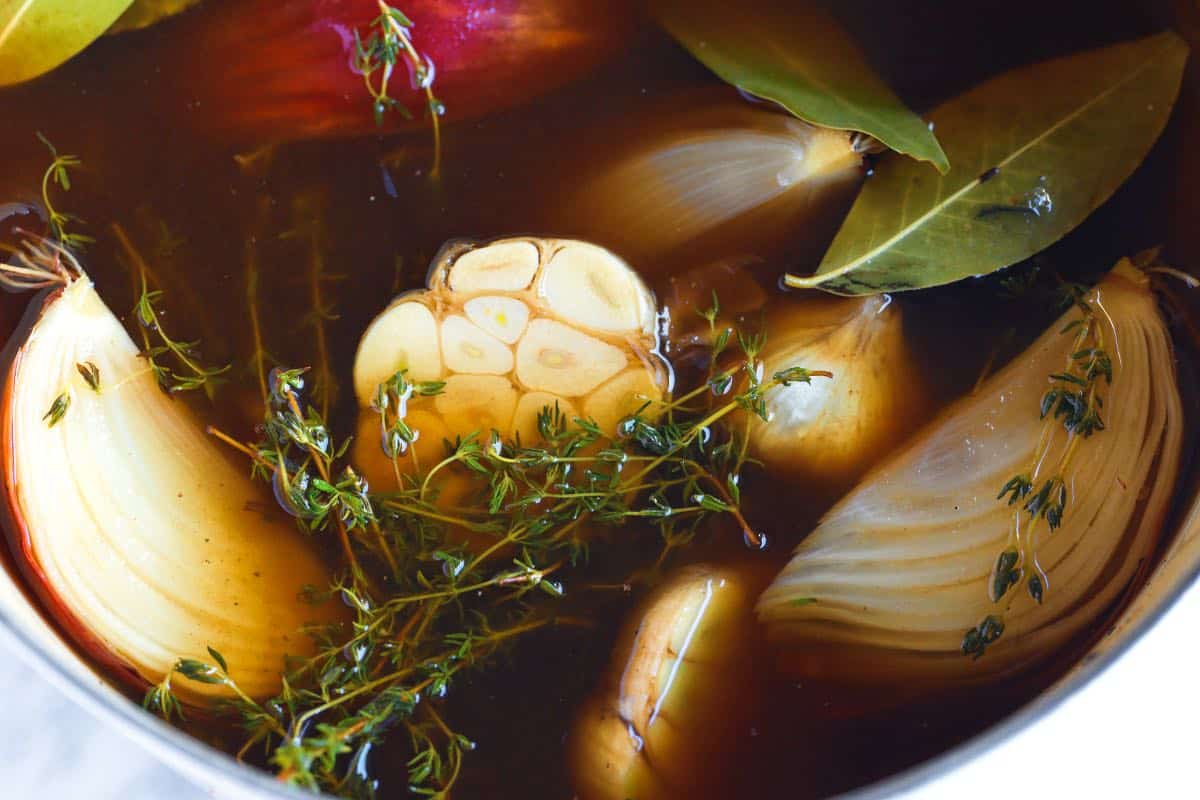
Incredible Turkey Brine
- PREP
- COOK
- TOTAL
Use this turkey brine for turkey with amazing flavor, soft and tender meat, and crispy skin. We highly recommend it to anyone preparing a turkey.
Watch Us Make the Recipe
You Will Need
1 (12 to 20 pound) turkey, thawed
2 gallons (7.5L) cold water
4.5 ounces (128g) kosher salt or good quality sea salt; see tips for volume measurements
3/4 cup (160g) packed brown sugar
1/4 cup (60ml) Worcestershire sauce or Pickapeppa sauce
1 tablespoon (10g) coarse ground black pepper
1 onion, quartered
2 whole bulbs garlic, cut in half
1 bunch fresh thyme
5 bay leaves
Directions
- Make the Brine
1In a large pot, combine 2 quarts (8 cups) of water, salt, brown sugar, Worcestershire sauce, black pepper, onion quarters, garlic, thyme, and bay leaves.
2Bring to a simmer over medium-high heat and cook for 5 to 10 minutes or until the salt and sugar have dissolved completely.
3Allow the brine to cool to room temperature.
- Brine the Turkey
1Place the turkey in a lined 5-gallon bucket or brine bag.
2Pour the room-temperature brine over the turkey, then add the remaining 6 quarts (24 cups) of cold water to the bucket or brine bag. If using a brine bag, be careful to hold the sides of your bag so they don’t flop down as you pour — another set of hands from a friend is very helpful.
3Remove as much air as possible from the liner or bag and secure it shut. Place the bucket or brine bag in the refrigerator or ice-filled cooler.
4Brine the turkey for two days. To ensure that all areas of the turkey are brined, flip it halfway through the two-day brine — allowing any areas not entirely submerged to soak in the brine.
- Air-dry the Turkey
1Remove the turkey from the brine and place it onto a roasting rack set inside a rimmed baking sheet or roasting pan. Do not rinse the turkey.
2Refrigerate overnight before roasting the next day. We roast turkey in an oven preheated to 325°F (162° C) and highly recommend roasting the turkey with our turkey butter.
Adam and Joanne's Tips
- Salt: Diamond Crystal salt flakes are fluffier and lighter than Morton’s kosher salt. For Diamond Crystal kosher salt: use ¾ cup + ½ tablespoon. For Morton’s kosher salt: use ⅓ cup + 2 ½ tablespoons.
- Brine bag: Place in a roasting pan to prevent spills. We recommend using a heavy-duty brine bag.
- Cooler: Check ice water temperature regularly to ensure it stays below 40°F (4°C).
- Crisp skin: For best results, air-dry the brined turkey overnight in the fridge. If you are out of time, pat dry before roasting.

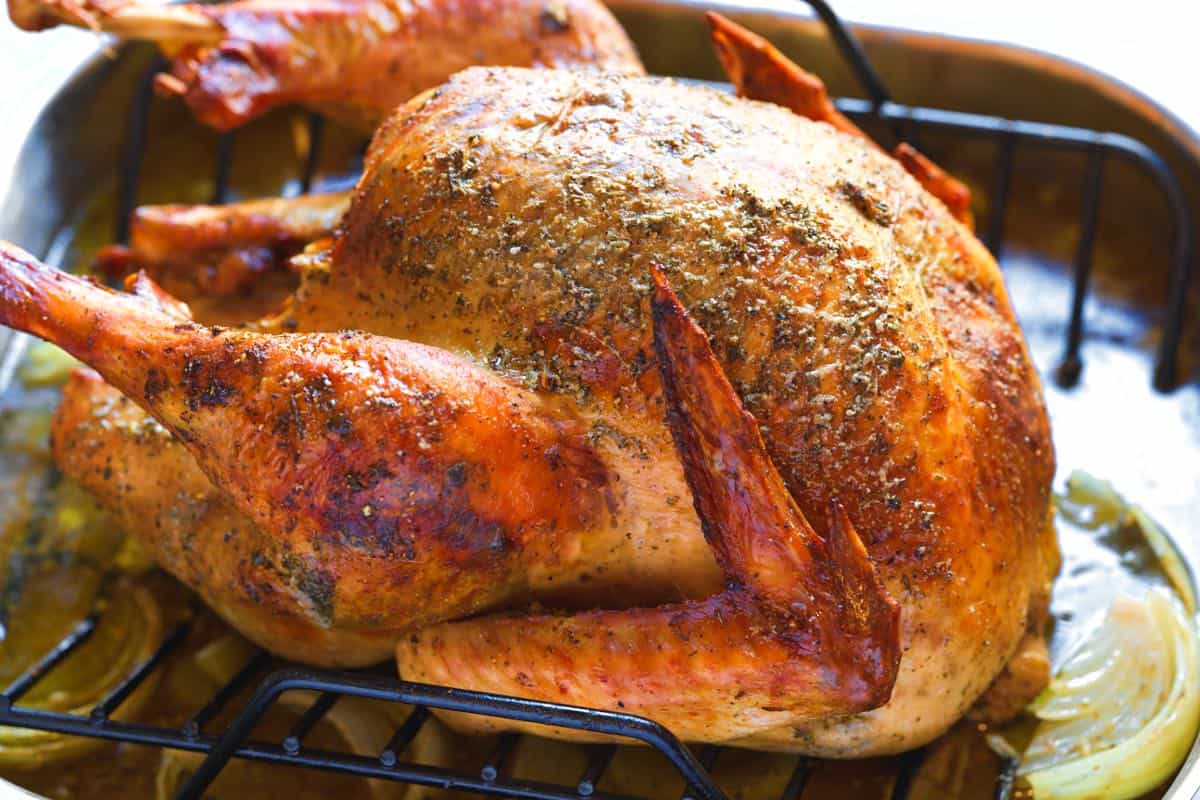
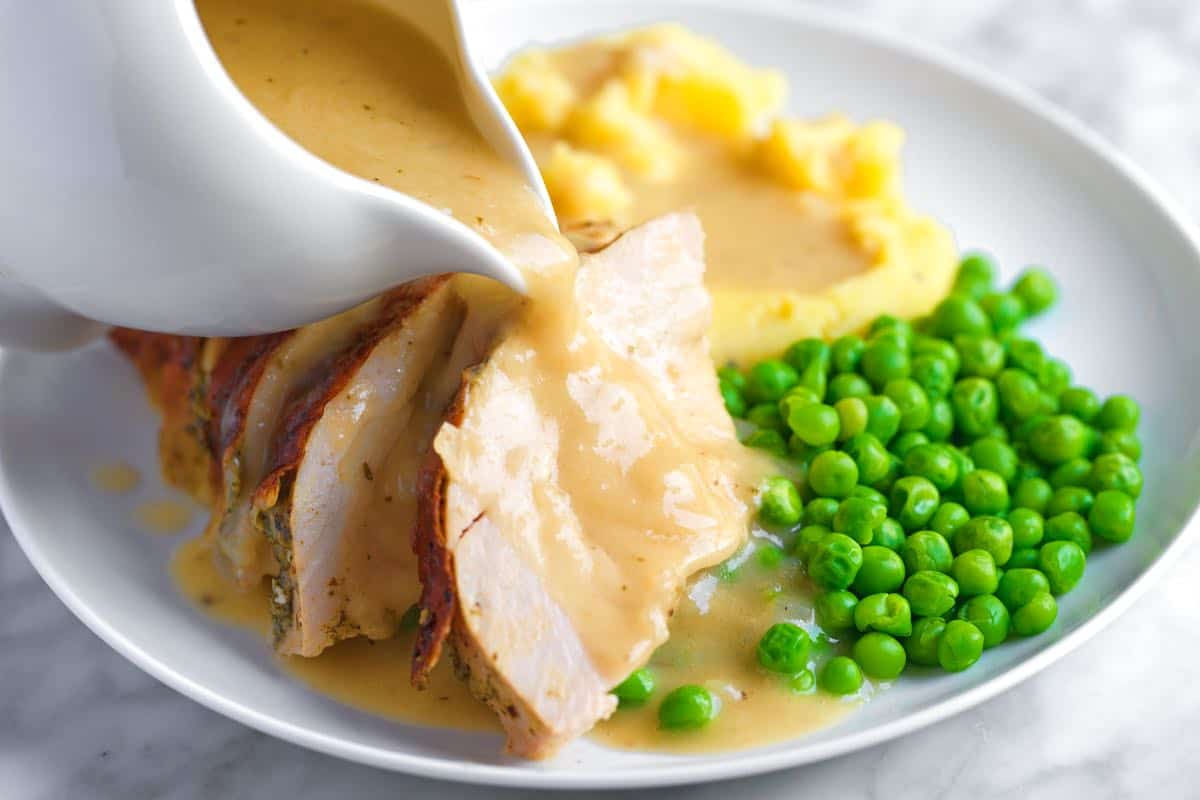
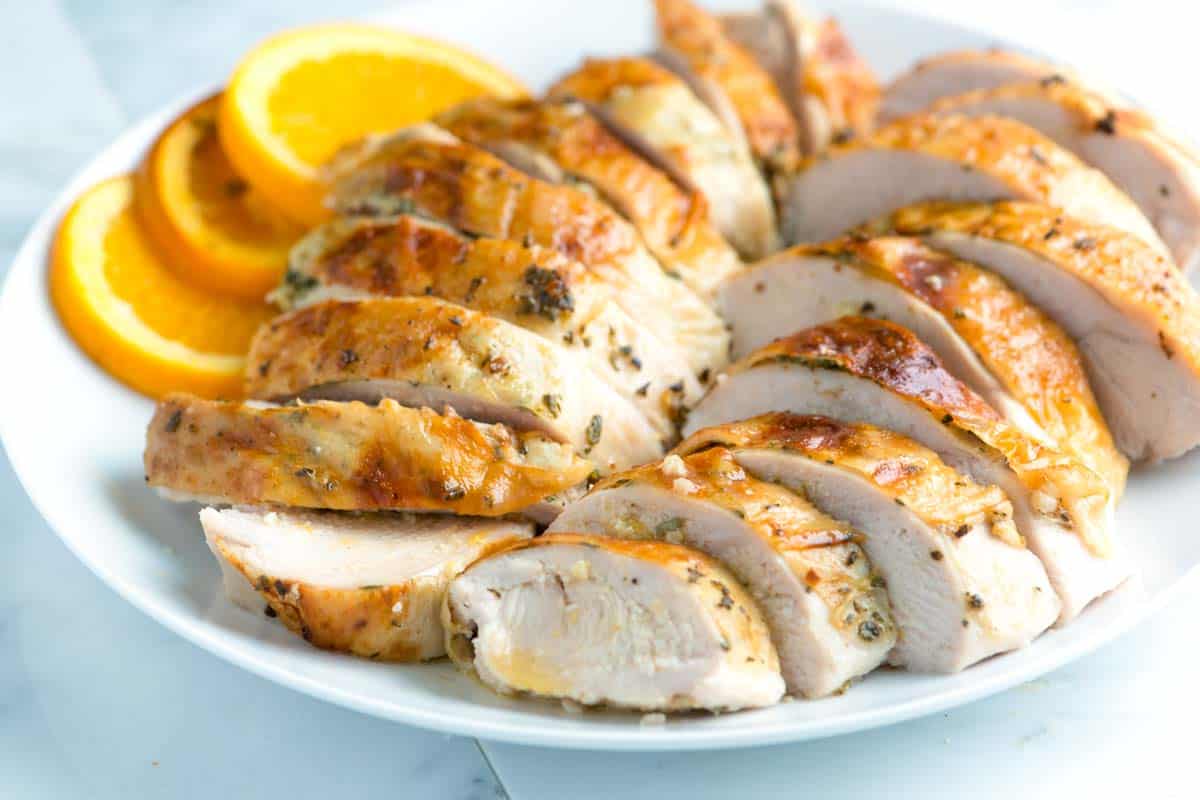
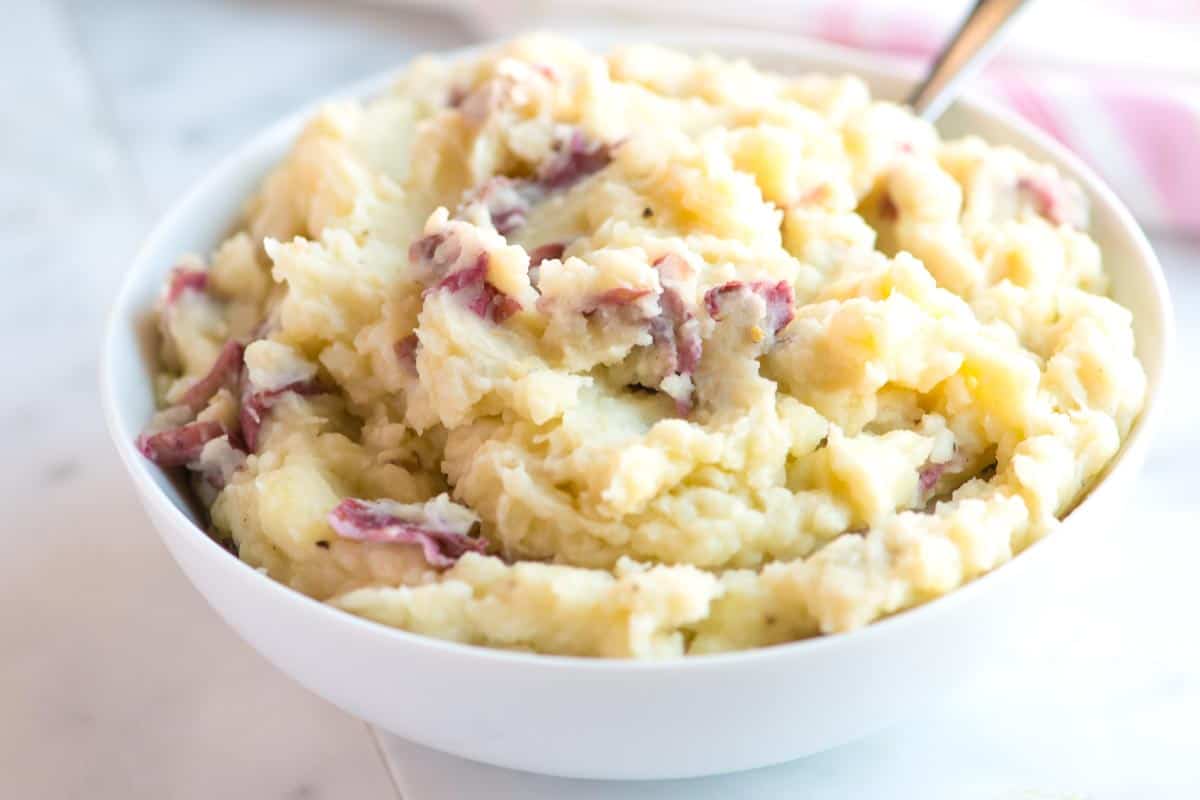
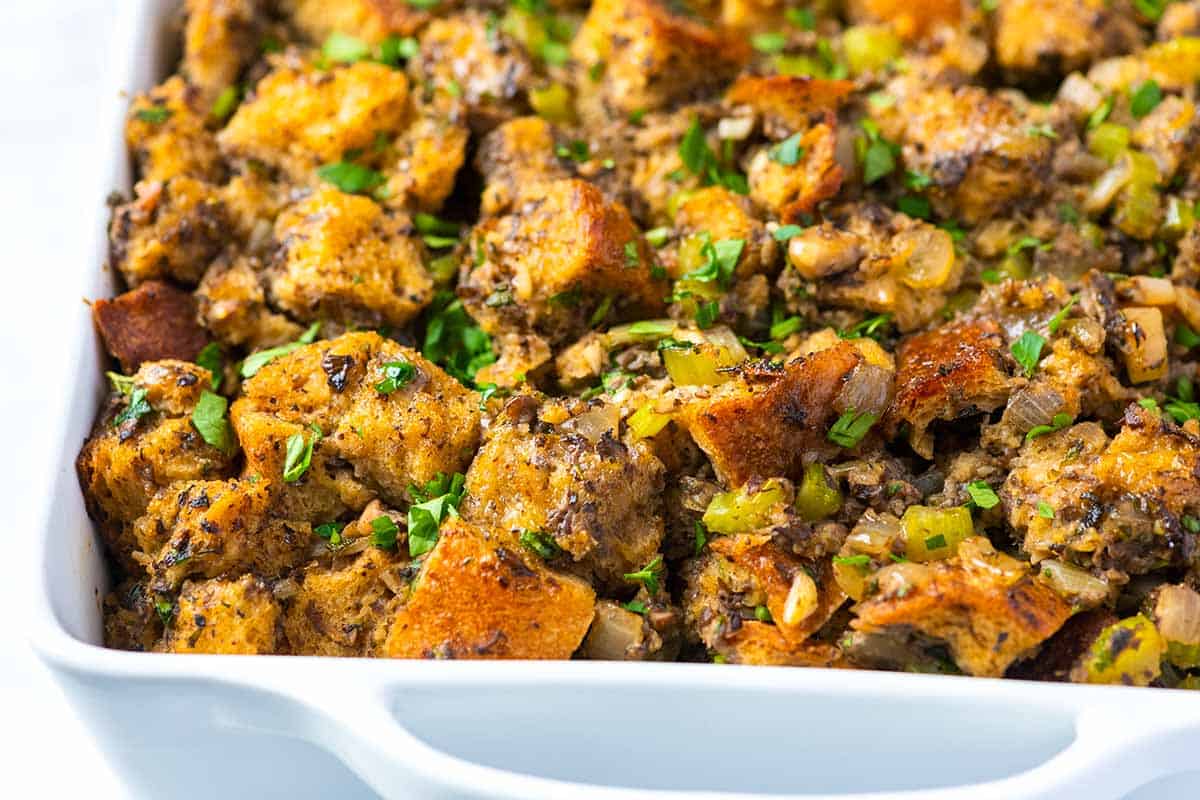
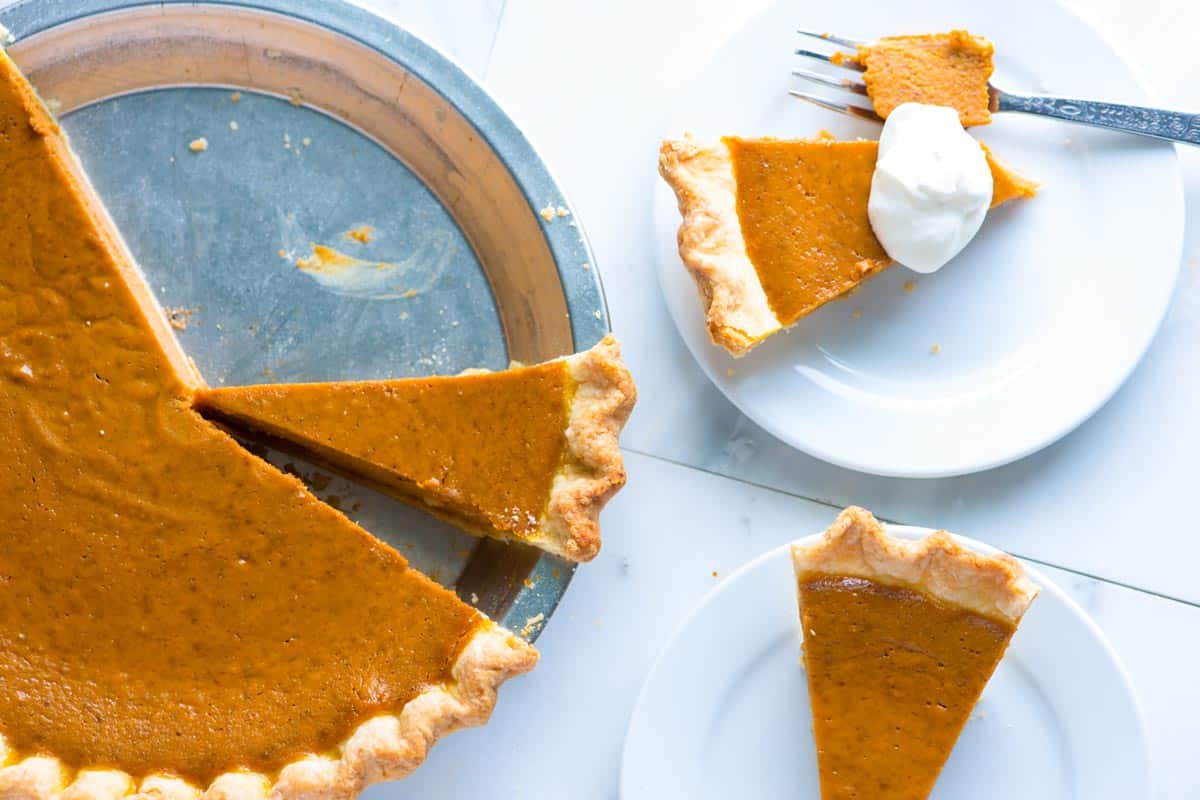


Used this and matching recipe last month turkey was gon in 2 days
Is this turkey roasted uncovered? Most new roasting pans don’t come with a cover….
Yes, the turkey is uncovered.
Do you cover the Turkey when roasting? If yes at what point do you take the lid/cover off?
Hi there, here’s our roast turkey recipe. We do not cover our turkey when roasting unless it is browning too much before the middle is cooked to temperature.